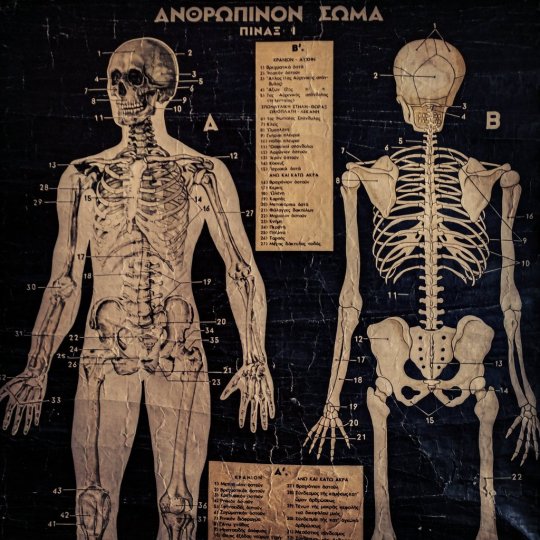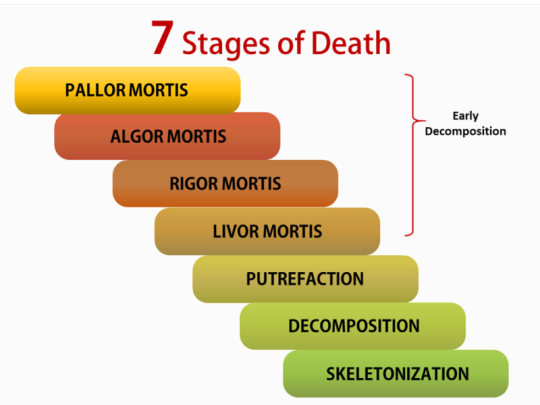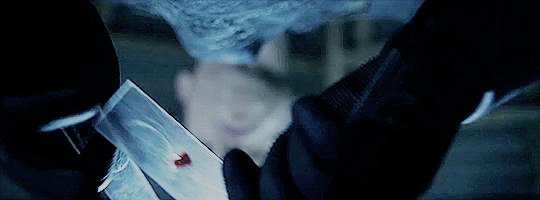Text
Crimes of Impulse - Murders of Jealousy and Rage
Impulse crimes are commonly referred to as ‘crimes of passion’ or acts carried out in the ‘heat of the moment’. Often the ‘passion’ concerns a romantic or sexual relationship, or may simply mean no more than any strong emotion one is experiencing such as rage or anger.
Broadly speaking, crimes can often be broken up into two defined categories: expressive and instrumental. Expressive crimes, or our crimes of impulse, are contrasted by instrumental crimes; those preceded by planning, and carried out with malice aforethought. Certain motives behind crimes are judged as more understandable and forgivable; others as vile or inhuman.
When things go wrong in the sphere of love, we may find jealousy - and where we find jealousy, to an extreme enough degree, serious crimes including murder can occur, many as acts of spontaneity and in the heat of ‘passion’. Jealousy can be understood as an extreme emotional state, hardwired in our brains over centuries of evolution, to safeguard what we consider to be most precious to us. Our susceptibility to jealousy is shared by near all of us, and is why we so often find it in the works of art and literature - from Shakespeare’s Othello to Euripides‘ Medea. Of course, not all spontaneous violence and murder relates to jealousy - violence during brawls or in the course of an argument are often spurred by feelings of intense anger and rage.
Jealousy Murders
George Skiadopoulos
In 1999, George Skiadopoulos was convicted of the murder of 31-year old Julie Scully. A former model, Julie met George, a Greek sailor, while on a cruise in the Caribbean. Bored in her marriage to her current husband, Julie and George began an affair, following which Julie divorced her husband and began to live with George. An intensely jealous man, George often spied on Julie’s private phone calls and became increasingly argumentative, in one instance going so far as to choke Julie’s mother. After charges forced him to return to Greece, Julie, who had returned with him and grown weary of both George and her new life, insisted on returning to the United States. George lured Julie to a remote spot and strangled her, before proceeding to dismember the body and dispose of it in the Aegean Sea.
Clara Harris
Clara Suarez Harris, the only child of an affluent family, lived an upscale and flourished life in Houston, Texas with her husband, David Harris, both of whom shared in the profession of dentistry. Busy with both motherhood and a successful practice, David felt sidelined by Clara, and soon began an affair with his receptionist, Gail Bridges. However, the affair soon become known to Clara, who, after hiring a private investigator, traveled to the hotel David and Gail were staying in. Upon them emerging from the lobby, Clara proceeded to mow down her husband with her car, driving over him a further two times in order to kill him.
Jeremy Akers
Born to a working-class family in Mississippi, Jeremy Akers was the typical all-American overachiever - a straight-A student, bodybuilder and highly competitive individual; graduating law school before serving in Vietnam. Upon his return, Jeremy married Nancy Richards, to whom he was brash, domineering, jealous and possessive. The marriage soon began to deteriorate. Depressed after the birth of her third child and feeling unappreciated by her husband, Nancy struck up an acquaintance with truck driver, Jim Lemke. The pair shared an appreciation of writing and soon became lovers. Having already suspected the two’s infidelity, Jeremy’s feelings only escalated upon Nancy suing for divorce. Using the pretext of discussing divorce details, Jeremy lured Nancy back to their house, where he shot her to death with a .38 before turning the gun on himself.
Impulse Murders: Emphasis on Rage
Robert Rowe
Robert was born one of two brothers raised in a Protestant family. Married to a Catholic woman (despite the protests of his mother) to whom he had two sons with: Bobby and Chris, who was born blind and deaf due to his wife’s early contraction of rubella during pregnancy. Robert was described as unusually stoic in the face of his son’s condition, forming a support group for other couples in similar situations. When he was forty, he and his wife adopted a young girl. Three years later, Robert’s mother passed away, but not before humiliating him by admitting she wished she had aborted him before he was born, as she had with her first two pregnancies. She considered Robert as nothing more than a lowly bureaucrat and a fake, and disinherited him in a final act of spite. Robert soon became seriously depressed, suffering recurrent dreams in which his mother urged him to kill his family. Receiving psychiatric treatment for his depression, Robert was unable to continue work as an attorney and took up a job as a New York cab driver. However, not long after, his cab was stolen and Robert was unwillingly reduced to a house husband while Mary worked. Upon discovering his other child, Bobby, had developed a congenital hip disease that may render him wheelchair bound, Robert ceased taking his medication and slipped further into depression. The suggestion to place Chris in the care of an institution was raised by Robert, but ultimately dismissed by his wife, further deteriorating the situation. The culmination of these events came about in 1978, wherein Robert took a baseball bat to his three children, bludgeoning them to death. Upon her return home, Robert instructed his wife to put on a blindfold as he had a ‘surprise’ for her - the surprise being him proceeding to bludgeon her to death with the bat as well. Robert then attempted suicide by way of the gas from his oven, but was rescued by a neighbor.
Susan Wright
Susan Wyche worked as a go-go dancer at the local discotheque, where she met her soon-to-be husband, Jeff Wright. An affair soon ensued, the result of which was Susan falling pregnant to Jeff, who, to Susan’s irritation, delayed in marrying her until she was eight months along in her pregnancy. While Jeff’s job as a fairly successful salesman afforded them the ability to live in relative comfort, he was addicted to both cocaine and other women - avocations ruinous to both their finances and their marriage. In 2003, Susan’s anger having reached a tipping point, she enticed Jeff into their bedroom under the pretext of engaging in bondage activities, allowing himself to be restrained to the four corner-posts of their bed. In a burst of rage, Susan mutilated his genitals and stabbed Jeff near two hundred times. Panicked, Susan dragged the body to their yard before disposing of it in a pit, dug earlier by Jeff for an unknown reason. Susan had planned to tell people Jeff had simply ‘disappeared’, however this would prove to be in vain, as their dog dug up the body only a few days later.
Dr. Bruce Rowan
Idaho-born to a large family, of which he was the youngest, Bruce Rowan was depressed for most of his life, grappling with feelings of unworthiness and suicidal idealisation. During the course of his academic studies as a medical student, Bruce continued to suffer from suicidal thoughts, for which he was temporarily hospitalised. Debbie, Bruce’s girlfriend, stood by him during this time, partly due to her love for him, partly out of the fearful belief that were she to leave, he would attempt to kill himself. The pair married and spent considerable time traveling the world and doing charitable work in various countries before returning to the United States to settle down. Bruce was still determined to travel, to provide aid to the needy, in hopes this would alleviate his continual feelings of unworthiness. Following their adoption of a young girl, Debbie was often preoccupied with caring for their baby, and Bruce, saddled with chores and finding himself with less quality time with Debbie, began to grow resentful. In 1998, Bruce’s resentment turned to rage, and he murdered Debbie using an axe. Bruce then placed the body in their car before pushing it down a hill in an attempt to convey the appearance of an unfortunate accident. At trial, Bruce was ultimately found not guilty by way of mental illness.
(source)
#true crime#tc#psychology#criminal psychology#crime#criminology#study#i've been pretty inactive on this blog over the last 2 years as you can imagine life has been tumultuous#and then i'm back with one long post out of nowhere#but anatomy of evil remains unfinished on my shelf and this is my way of trying to make it to the end#this one was a doozy to read and type up#tw murder#tw suicide
31 notes
·
View notes
Photo



I’ve seen it in the flights of birds, I’ve seen it in you
In the entrails of the animals, the blood running through
1K notes
·
View notes
Text
the fact that the actual zodiac killer had to live with ted cruz taking his title for 3 years is by far the funniest and the only thing I'm taking away from all of this
3K notes
·
View notes
Text
Algor Mortis

Algor Mortis is the name given to the loss of a body’s temperature after death. If the body is found within 24 hours following death it may be possible to use temperature to estimate the time of death provided the following conditions are met:
1. The body has been in a place that has remained at normal room temperature without extreme heat or cold
2. The victim’s pre-death temperature was not elevated for example by illness
3. The victim was not wearing clothes that may have insulated the body for example a thermal winter coat
With a normal body temperature of 37° celsius before death, the body cools at a rate of 1-1.5°C per hour. Taking an internal temperature and subtracting it from 37°C provides an estimated time of death. For example, a dead body with a temperature of 34°C would suggest the person died between 3 to 4.5 hours ago.
355 notes
·
View notes
Text
jonathan groff in matrix resurrections has turned me into a holden ford serial killer ending truther
160 notes
·
View notes
Photo






DEXTER: NEW BLOOD CALLBACKS // episode one, “cold snap”
#it's been a hot minute since i posted on this blog#the last two years have been crazy for everyone#but i started watching this today and i'm so happy to see dexter's back#dexter new blood
445 notes
·
View notes
Photo

Examining Shoe Prints And Tire Tracks
Footwear and tire track evidence can be found at the majority of crime scenes. A perpetrator will always have to arrive, commit a crime and then leave the scene in a vehicle or on foot.
This type of evidence can help investigators find out important information like where the crime occurred, how many people or vehicles were present, the direction the perpetrator could have travelled and if the scene is connected to other recent crimes.
Visible prints are transfers of a substance/material from the tire or shoe on to a surface. They can be seen with the naked eye. Example: muddy tire tracks or bloody boot print
Plastic prints are three-dimensional impressions left on a soft surface. These prints can be cast and preserved for later analysis. Example: tracks left in mud, snow or sand
Latent prints are not visible to the naked eye. By using chemicals, powders or alternate light sources these prints can become visible. Example: shoe prints on a window sill or tire tracks on roads or sidewalks
606 notes
·
View notes
Text
A Basic Overview of the Many Different Types of Death
When talking about death forensically, or medically, there are many different categories of death, and types of deaths to consider. Here, I will walk you through some of the basics.
Basic definitions
Thanatology: is the scientific study of death. It investigates the mechanisms and forensic aspects of death, such as bodily changes that accompany death and the post-mortem period, as well as wider social aspects related to death. the types of deaths investigated in a forensic context include:
Violent deaths (accidents, homicides, suicides)
Suspicious deaths
Sudden and unexpected deaths
Deaths without a physician in attendance
Deaths in an institution (such as a prison)
Death: Cessation of life. In lower multicellular organisms, death is a gradual process at the cellular level, because tissues vary in their ability to withstand deprivation of oxygen. In higher organisms, death is a cessation of integrated tissues and organ functions. In humans, death is manifested by the loss of heart beat, the cessation of breathing, and cerebral death.
Cerebral Death: Permanent loss of cerebral and brainstem function, manifested by the absence of responsiveness to external stimuli, absence of cephalic reflexes (reflexes associated with the cranial nerves) and apnea (absence of breathing).
Delayed Deaths: Long delay between injury and death, as long as the death was a result of the injuries. An example of this would be a person being shot, living through the experience, but dying years later from health complications arising from being shot. In such as case as someone being shot, the death may be ruled a homicide, although the death happened years after the initial gunshot, and legal ramifications may be dealt out.
Cause, Mechanism, and Manner of Death
Cause of death: Any injury or disease that produces a physiological derangement in the body that results in the death if the individual.
Mechanism of Death: The physiological derangement produced by the cause of death that results in death.
Manner of Death: Explains how the cause of death came about. They can generally be categorized as:
Natural
Homicide
Suicide
Undetermined
So basically, the cause of death is the initial injury or disease that was inflicted upon a person. The mechanism of death is the body’s resulting reaction to the disease or injury; a biochemical or physiological abnormality is produced. The manner of death is simply used by medical examiners in order to categorize cause and mechanism of death. For example, a person can be shot (the cause of death, the initial injury), and die of a massive hemorrhage (the mechanism of death, the physiological abnormality), and the death is ruled a homicide (the manner of death).
Forensic pathologists evaluate the evidence of a case, as well as the results of the autopsy (if one is performed) in order to determine the manner of death. It is the job of the forensic pathologist to compare the accounts of what happened to the victim, and the forensic evidence and determine if those two things match up or not. For example, a person is found dead due to a fatal gunshot wound. A witness says that the person committed suicide, but the forensic evidence reveals a gunshot wound to the back of the head, inflicted from a distance. The forensic evidence and the account of what happened do not match in this case, which might lead the forensic investigator to determine the manner of death to be homicide instead of suicide.
Subcategories Within Natural Death: Sudden and Unexpected Deaths
Sudden deaths and unexpected deaths are the two most common types of natural deaths. Sudden deaths can be instantaneous, sudden but not instantaneous, or a case where the person was found dead, and it is unclear if it was instantaneous or not.
Sudden, Instantaneous Death
A sudden, instantaneous death can occur in many different forms, but the most common one is someone walking along, and suddenly they collapse, and they are dead upon hitting the ground. The most common cause of this type of death is ventricular arrhythmia due to coronary artery disease. A person who died a sudden, instantaneous death will often show impact abrasions on the bony ridges of their body and face (check bone, forehead, chin, elbows, knees, etc.) The impact abrasions are caused by the individual’s inability to brace their fall; the person is usually dead before they hit the ground, therefore they cannot brace their fall. Impact abrasions are a good way to distinguish an instantaneous death from a sudden, but not instantaneous death.
Sudden, But Not Instantaneous Death
The sudden, but not instantaneous death is simply slower than instantaneous death. The person usually has time to complain of chest pain, difficultly breathing, weakness, sweating, or nausea (or any other symptoms) before they collapse and die. Depending on how long it takes the person to die, the death may not be considered sudden. Most medical examiners consider a death within a hour of the onset of symptoms a sudden death. Usually people who die sudden, but not instantaneous deaths die on the way to the hospital, or in their homes. In their homes, the individuals are usually found in their bed, or in some type of intentional position, as opposed to instantaneous deaths, where the individuals are usually found sprawled on the floor, or in a position indicative of a fall. Individuals who die sudden, but not instantaneous deaths usually do not have impact abrasions, but in some cases, they may.
Unexpected Deaths
There are two types of unexpected deaths, really. There are unexpected deaths that come about because of a car crash, or train derailment, building collapse, a fatal fall, etc. These are unexpected deaths, but the manner of death is usually classified as accidental. In this section, we will talk about unexpected natural deaths. Unexpected natural deaths are usually individuals who are found dead (of some natural cause) and it cannot be determined whether the death was instantaneous or not. The classification of unexpected death is mainly used when the medical examiner cannot determine the type of sudden death that occurred.
1K notes
·
View notes
Photo


People think it’s just an expression. It’s not; it’s an instruction.
347 notes
·
View notes
Text

@fincher i am really reaching my limit here
130 notes
·
View notes
Text
Gradations of Evil Scale
Killing in Self-Defense or Justified Homicide
Category 1. Justifiable homicide
Impulsive Murders in Persons without Psychopathic Features
Category 2. Jealous lovers, egocentric, immature people, committing crimes of passion
Category 3. Willing companions of killers, impulse-ridden; some antisocial trait
Category 4. Killing in self-defense, but extremely provocative toward the victim
Category 5. Traumatized, desperate persons who kill relatives or others, yet have remorse
Category 6. Impetuous, hotheaded murderers, yet without marked psychopathic traits
Persons with a Few or No Psychopathic Traits; Murders of a More Severe Type
Category 7. Highly narcissistic persons, some with a psychotic core, who murder loved ones
Category 8. Murders sparked by smoldering rage -- resulting sometimes in mass murder
Psychopathic Features Marked; Murders Show Malice Aforethought
Category 9. Jealous lovers with strong psychopathic traits or full-blown psychopathy
Category 10. Killers of people “in the way” (including witnesses); extreme egocentricity
Category 11. Fully psychopathic killers of people “in the way”
Category 12. Power-hungry psychopaths who murder when “cornered“
Category 13. Inadequate, rageful psychopaths; some committing multiple murders
Category 14. Ruthlessly self-centered psychopathic schemers
Spree or Multiple Murders; Psychopathy Is Apparent
Category 15. Psychopathic, cold-blooded, spree or multiple murderers
Category 16. Psychopathic persons committing multiple vicious acts (including murder)
Serial Killers, Torturers, Sadists
Category 17. Sexually perverse serial killers; killing is to hide evidence; no torture
Category 18. Torture-murderers, though the torture element is not prolonged
Category 19. Psychopaths driven to terrorism, subjugation, rape, etc. short of murder
Category 20. Torture-murderers but in persons with distinct psychosis (such as schizophrenia)
Category 21. Psychopaths committing extreme torture but not known to have killed
Category 22. Psychopathic torture-murderers with torture as their primary motive. The motive need not always be sexual
#true crime#tc info#serial killer#psychology#forensic psychology#forensic psychiatry#criminal psychology#serial killers#mine#i've been so inactive here lately because of uni#so please accept this offering#in case you can't tell i've been rereading the anatomy of evil
496 notes
·
View notes
Quote
When I had interviewed Berkowitz in Attica, he had tried to pass the dog story off on me. 'Hey David, knock off the bullshit,' I said. 'The dog had nothing to do with it.' In fact, the story didn't even come into being until after his arrest. He laughed and nodded and conceded that I was right.
John Douglas, The Killer Across The Table
#this is still one of my all time favourite interactions between douglas and a perp#it's the epitome of big dick energy he just calls berkowitz out on spinning a bullshit story to everyone#john douglas#david berkowitz#son of sam#true crime#mine
37 notes
·
View notes
Photo






The Investigative Team of Netflix’s Mindhunter - and the real people they are based on
Agent Holden Ford and Agent John Douglas
The author of the original ‘Mindhunter’ FBI agent John Douglas has proved to be the inspiration for many fictional characters, including The Silence of the Lambs’ Jack Crawford and Criminal Minds’ Agent Rossi and now most recently: Mindhunter’s Agent Holden Ford.
Douglas began working in the FBI’s Behavioural Sciences Unit in 1977, teaching hostage negotiation at the FBI Academy. Alongside his partner Robert Ressler, Douglas traveled across the United States instructing local law enforcement.
Douglas retired from the FBI in 1995, after the stress of working on the case of the Green River Killer (later discovered to be Gary Ridgway) took a toll on his health. Douglas has remained an active consultant since then however, most notable on the case of the murder of Jon Benet Ramsey.
Agent Bill Tench and Agent Robert K. Ressler
Robert Ressler was a US army veteran who joined the FBI in 1970. Ressler was the first person to coin the term “serial killer” and worked with his partner Agent Douglas to organise the interviews of 36 incarcerated serial killers.
Together Ressler and Douglas interviewed Ted Bundy, John Wayne Gacy, Richard Speck, Ed Kemper, Dennis Rader, Lawrence Bittaker and many more notorious killers.
Ressler was also integral in the creation of the FBI’s Vi-CAP program designed to co-ordinate information on unsolved violent crimes. Ressler worked on several infamous serial killer cases including that of Jeffrey Dahmer and the Vampire of Sacramento Richard Chase before his retirement in 1990.
Doctor Wendy Carr and Doctor Ann Wolbert Burgess
Doctor Burgess is currently teaching forensic science at Boston College, but once worked closely alongside Agents Douglas and Ressler. Doctor Burgess co-authored and published ‘Sexual Homicide: Patterns and Motives’ alongside Ressler and Douglas in 1988.
Burgess also co-founded a counseling program for victims of sexual violence at the Boston City Hospital. She has also worked closely with sociologist Doctor Lynda Holmstrom to highlight the symptoms caused by rape trauma syndrome.
I made a post similar to this for the serial killers of Mindhunter so it felt right to research and post about the good guys too.
505 notes
·
View notes
Text
ted: i got you manson
holden:

415 notes
·
View notes









